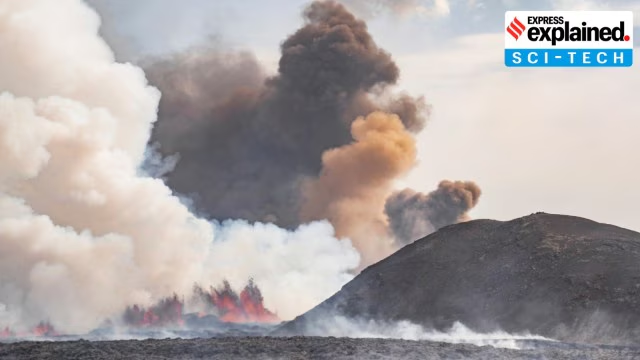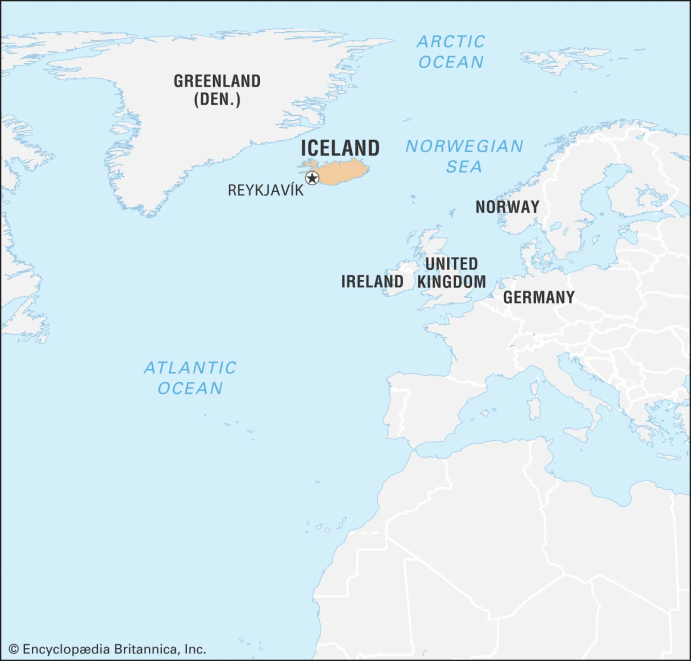Free Courses Sale ends Soon, Get It Now


Free Courses Sale ends Soon, Get It Now



Copyright infringement not intended
Picture Courtesy: https://indianexpress.com/article/explained/explained-sci-tech/volcano-in-iceland-erupts-why-is-the-country-so-volcanically-active-9365554/
Context: Sundhnuksgigar volcano in southwest Iceland erupted on May 29, causing evacuations of Grindavik and the Blue Lagoon spa.
Iceland's Volcanic Activity and Types

About Iceland

Source:
|
PRACTICE QUESTION Q. Iceland's landscape is dominated by volcanic features. Which of the following are likely to be found in Iceland? 1. Active and dormant volcanoes 2. Extensive lava fields and geothermal hot springs 3. Glaciers and ice caps due to high latitude How many of the above statements are correct? A) Only one B) Only two C) All three D) None Answer: C |
© 2024 iasgyan. All right reserved